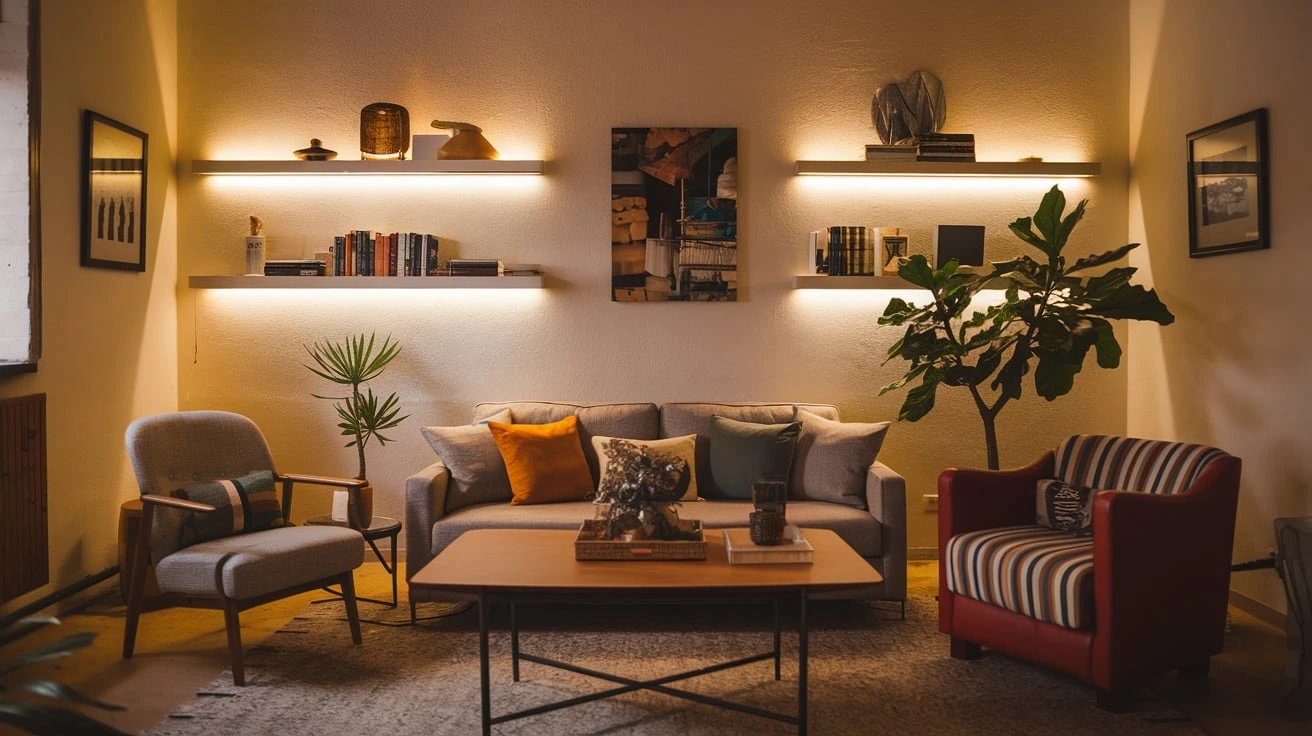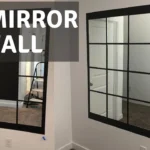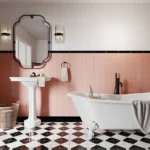What is ambient lighting? Ambient lighting refers to the primary light source in a room that provides overall illumination without causing harsh glare or shadows. This type of lighting is crucial for creating a comfortable, inviting atmosphere that suits the mood of the room. It often combines different lighting elements like LED lighting, pendant lighting, and dimmable fixtures to achieve the perfect balance
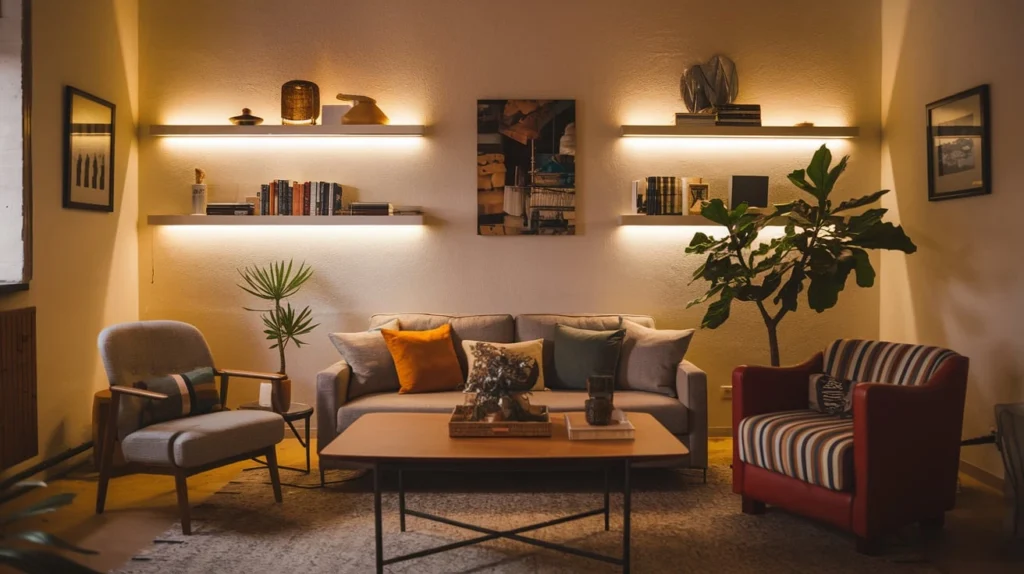
Content
What Is Ambient Lighting?
Ambient lighting is the foundation of any lighting design in interior spaces. Unlike task lighting, which focuses on specific activities (like reading or cooking), ambient lighting serves to illuminate the entire room softly and uniformly. This lighting creates a warm, welcoming environment and enhances the space’s overall mood. It sets the stage for how we experience a room, influencing not only its functionality but also its aesthetic appeal.
The purpose of ambient lighting is to provide adequate light for daily activities while avoiding harsh glares or deep shadows. It helps to make spaces feel cozy and inviting, and the quality of ambient light can make a significant difference in how comfortable a space feels.
Different Types of Ambient Lighting
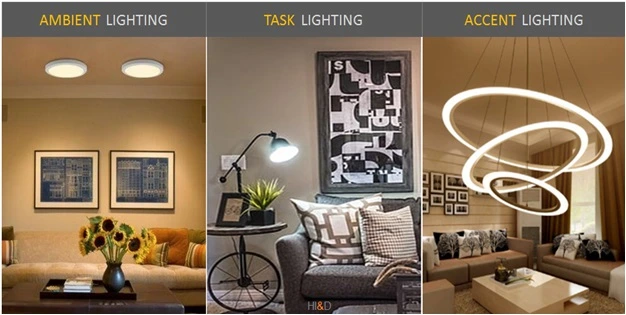
Recessed Lighting
One of the most popular choices for ambient lighting is recessed lighting, which involves embedding light fixtures in the ceiling. This type of lighting is especially useful for creating a clean, modern look while providing ample light without taking up valuable space. It is typically used in kitchens, living rooms, and bathrooms to offer a smooth, unobtrusive light that covers the entire room.
Recessed lighting can be equipped with LED bulbs for energy efficiency, reducing electricity usage while providing high-quality illumination.
Pendant Lighting
Pendant lighting adds both function and style to any room. Suspended from the ceiling, pendants are often used to provide ambient lighting in spaces such as dining rooms, kitchens, and even living rooms. These lights come in a wide range of styles, from minimalist designs to elaborate, decorative options.
Using pendant lighting to create ambient lighting allows you to add a personalized touch to your space. You can adjust the brightness by choosing bulbs with different color temperatures, which affect the overall feel of the room.
Chandeliers and Wall Lights
For larger rooms or more traditional settings, chandeliers and wall lights are excellent options for ambient lighting. Chandeliers, particularly in dining rooms or entryways, provide an elegant touch while offering broad illumination. Wall lights or wall sconces can help direct light where needed, creating an inviting atmosphere in spaces like living rooms and bedrooms.
These fixtures often come with dimmable options, allowing you to adjust the light based on the time of day or the mood you want to create.
Flush-Mounted Ceiling Lights
In smaller spaces, flush-mounted ceiling lights provide an unobtrusive solution for ambient lighting. These fixtures are directly attached to the ceiling, offering maximum headroom while still delivering even, effective light. They are a popular choice for bedrooms, hallways, and offices, where space is limited but bright, balanced lighting is essential
Key Factors in Choosing Ambient Lighting
Color Temperature and Its Effect
The color temperature of your light has a major impact on the atmosphere of your space. Light can range from warm to cool, and this variation can influence the room’s mood. Warm light (below 3,000 Kelvin) creates a cozy, relaxing environment, ideal for living rooms and bedrooms. Cool light (above 4,000 Kelvin) provides a more energizing effect, perfect for workspaces like kitchens or offices.
The right color temperature can complement the overall design of a room, enhancing its warmth or vibrancy depending on the desired outcome.
Brightness and Dimming Features
Flexibility in ambient lighting is crucial. This is where dimmable lighting options come into play. Being able to adjust the brightness of your lighting setup helps you cater to different activities and times of day. Whether you need bright light for tasks like cooking or dimmed lighting for a relaxed evening, dimmer switches give you total control over your space’s ambiance.
Dimming features are essential in rooms like bathrooms and kitchens, where lighting needs change throughout the day. A bright light in the morning may be ideal for getting ready, while softer lighting is better for winding down at night.
LED Lighting vs. Traditional Bulbs
LED lighting has revolutionized ambient lighting in recent years. LED bulbs are energy-efficient, long-lasting, and available in a wide range of color temperatures, making them versatile for any room. They also offer significant savings on electricity bills compared to traditional incandescent bulbs. Additionally, LEDs are available in dimmable versions, adding even more flexibility to your lighting setup.
Switching to LED lighting for ambient lighting is a smart investment, providing both environmental and financial benefits without compromising on the quality of light.
Smart Lighting Systems
With the rise of smart homes, smart lighting systems have become increasingly popular for ambient lighting. These systems allow you to control your lighting via apps or voice commands, making it easier to adjust brightness, color, and timing to suit your preferences. Smart ambient lighting is a great way to create a personalized lighting experience with minimal effort.
These systems also often integrate with other smart home devices, allowing you to automate your lighting according to time of day, activity, or mood.
Ambient Lighting in Different Rooms
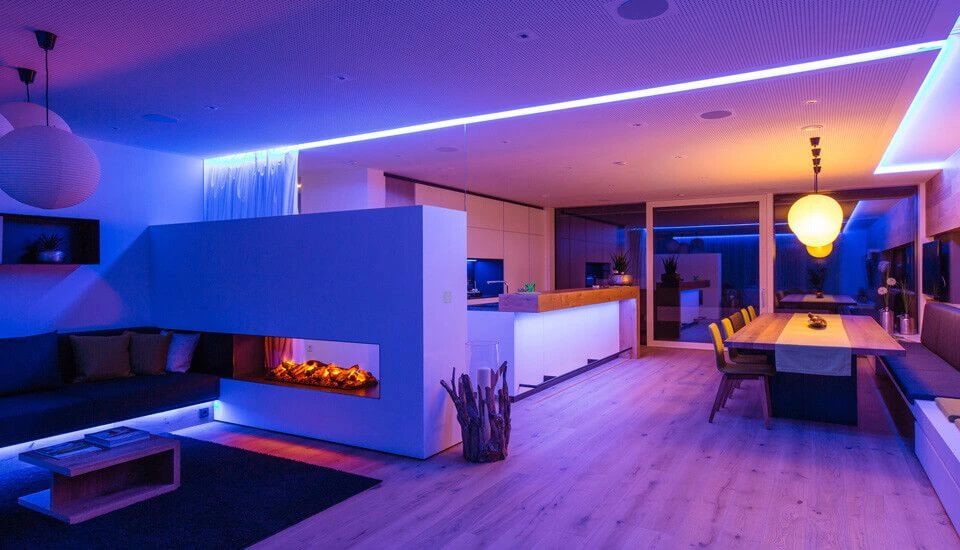
Living Room Lighting
The living room is a central hub for relaxation and socializing, and ambient lighting plays a key role in creating the right atmosphere. A mix of recessed lighting, pendant lights, and wall sconces can help create a layered lighting effect that can be adjusted depending on the time of day and the mood you’re aiming for. Using dimmable lighting options allows you to go from bright light for daytime activities to soft, relaxing light in the evening.
Bedroom Lighting
For the bedroom, the goal of ambient lighting is to create a calm, serene environment. Soft, warm lighting from fixtures like pendant lights, flush-mounted ceiling lights, and table lamps can help to set a peaceful tone. Consider using dimmable lighting and LED bulbs for energy efficiency and the ability to adjust the light to your needs.
A combination of ambient lighting with task lighting (like reading lights) and accent lighting (like bedside lamps) is perfect for a balanced and functional space.
Bathroom Lighting
Ambient lighting in the bathroom needs to be both practical and relaxing. Recessed lights and wall-mounted fixtures are great choices for providing soft, even light without harsh shadows. For tasks like applying makeup or shaving, task lighting with higher brightness can be used alongside the ambient lighting to create a versatile lighting setup.
Consider installing dimmer switches to control the brightness for different moods, from bright morning light to softer, relaxing light for unwinding in the bath.
Kitchen and Dining Areas
The kitchen and dining areas require ambient lighting that is both functional and inviting. A combination of pendant lights over islands or dining tables and recessed lighting in the kitchen can provide the perfect balance of light for cooking, eating, and entertaining. LED lighting is an energy-efficient choice that provides ample illumination without being overpowering.
How to Layer Lighting for the Best Effect
Combining Ambient, Task, and Accent Lighting
For the best ambient lighting effect, layering different types of lighting is essential. Task lighting (like under-cabinet lights or desk lamps) helps you focus on specific tasks, while accent lighting (like decorative lamps or spotlights) adds visual interest and highlights architectural features. Combining all three types creates a dynamic, balanced lighting environment.
Lighting Zones for Different Activities
Consider dividing your space into zones based on activities. For example, in an open-plan living area, ambient lighting can provide general illumination, while specific task lighting can be used for reading, cooking, or other activities. Adjust the brightness and color temperature of the lighting in each zone to suit its purpose.
Using Dimmers for Ultimate Control
Dimmers are a must for creating the right lighting ambiance. Adjusting the brightness in different rooms or during different times of day can change the entire mood of the space. Whether you’re hosting a dinner party or enjoying a quiet evening, being able to control the ambient lighting enhances the comfort of your home.
Conclusion
Creating the perfect atmosphere in your home starts with the right ambient lighting. Whether you’re using LED lighting, pendant lights, or smart lighting systems, it’s important to choose lighting that suits the space’s function and mood. By considering factors like color temperature, dimming features, and energy efficiency, you can create a versatile, inviting space that feels comfortable at all times of the day.

Elena Mohr is a dedicated home blogger who has been blogging for over six years. She covers everything home related. Elena also loves writing posts about her travels to Europe with her husband and two children.
